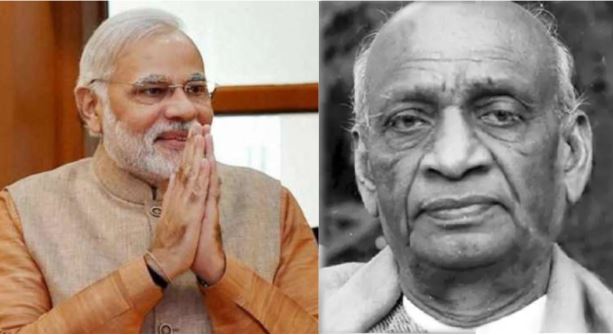In the long history of civilizational nations like India, there are only few people who could make it into the memory of the people for a long time. And even few are remembered and revered by the millions for their good deeds. Prime Minister of India, Narendra Modi, and former Deputy Prime Minister and Home Minister, Sardar Vallabhbhai Patel, are definitely among the leaders who will be remembered by the generations to come in the long history of Hindu civilization.
Interestingly, the both leaders have uncanny similarities and both of them have worked for the nation to achieve similar objectives, that is unity and integrity of India. Today is the birthday of Prime Minister Modi and on the very same day Indian forces liberated Hyderabad state (which today includes the districts of Telangana and Karnataka) from Mir Osman Ali Khan and his forces (Razakars) under the leadership of Sardar Patel.
While Sardar Patel Integrated India by bringing princely states (through hook or crook) on the negotiation desk to sign instrument of accession, Prime Minister Modi completed the last task by removing the Article 370 and ending the special status of erstwhile Jammu and Kashmir.
Many people have compared the personalities of Sardar Patel and PM Modi in the last six years but the first popular face to point out this was none other than Shivraj Singh Chouhan, the four time CM of Madhya Pradesh.
In August 2013, almost a year before the general election which changed India forever, Chouhan wrote on Twitter, “The stature and work of Shri Narendra Modi can only be compared with Sardar Patel.”
In October last year, referring to abrogation of Article 370, PM Modi said that Sardar Patel was the inspiration behind the decision which completed the process of Integration of India.
PM Modi, just like Sardar Patel is practising Hindu. When Junagadh was integrated in India, Sardar Patel proposed the idea of reconstruction of the temple to restore its old glory but PM Nehru opposed it. Although the Somnath Temple was not reconstructed during the lifetime of Sardar Patel, he was instrumental in pushing the idea. Similarly, under the leadership of PM Modi, India is witnessing the reconstruction of Ram Temple in Ayodhya, although the verdict in the favor of the temple came from the apex court. Like Nehru opposed the Somnath Temple, his party and left-liberal establishment which he empowered during his rule, opposed the construction of Ram Temple.
“Sardar Patel was a practising Hindu who, perhaps by his open support for the orthodox Hindu stream in the Congress, Rajendra Prasad and Purshottam Das Tandon, raised Nehrus hackles until Gandhi intervened and requested Sardar Patel to sink his differences with Nehru,” writes Seema Chisti in an article in Financial Express, titled Narendra Modi and Sardar Vallabhbhai Patel: All you ever wanted to know.
In the same article, Chisti, in her typical Communist tone, points out Sardar Patel was pro-business. PM Modi, too, is freeing out the Indian economy from the clutches of Socialism and weeding out Nehruvian white elephants.
So, just like Sardar Patel, PM Modi is a practising Hindu and a Capitalist, who is working for Integration and rejuvenation of India and wants to restore the country and Hinduism to its old glory.
